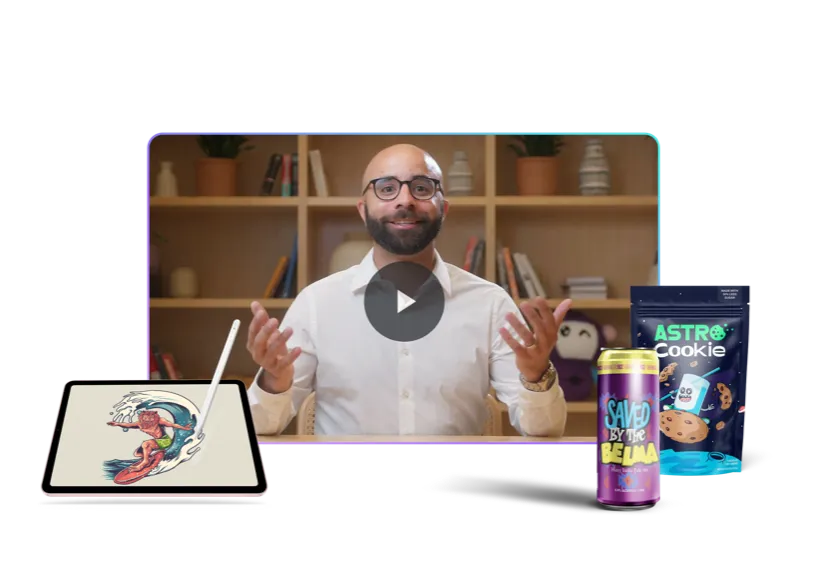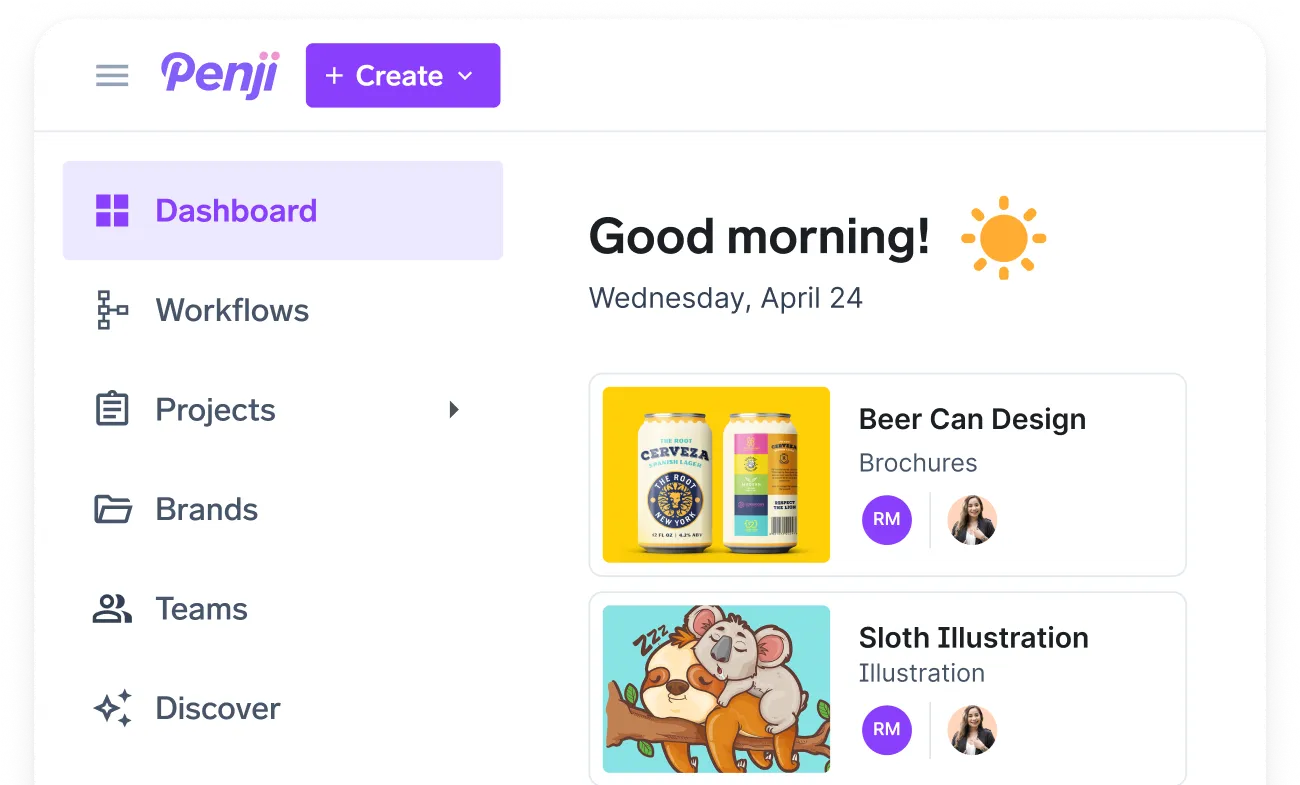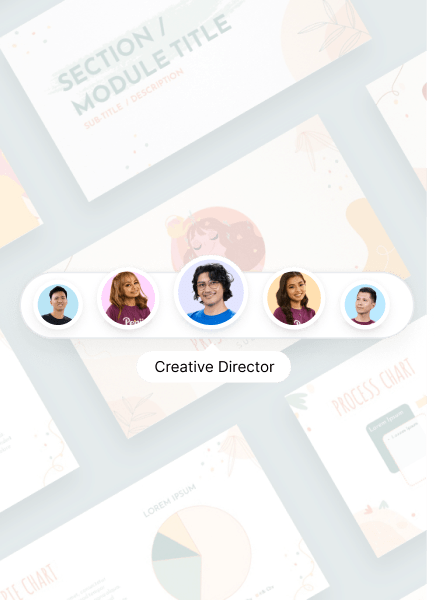![[Fully Managed] Jack Francis from The Escape Pod Ep. 191](https://penji.co/wp-content/uploads/2025/08/BLOG-IMAGE-Jack-Francis.jpg)
Daniela: Hello everybody, welcome to the Fully Managed Podcast. You know what this podcast is about. We talk about marketing, talk about business, and we give you guys tips to assist you in your business journeys. You know me as your host, Daniela, and I’m Penji’s partnership coordinator. We have a really cool guest today, Jack Francis from The Escape Pod. Hi Jack, how are you doing today?
Jack: Good, good. How are you doing?
Daniela: Good. I’m doing great. I’m so excited to have you here for our episode, and I’m looking forward to all the cool things that we’re going to discuss. But to get the ball rolling and get us started, I have a little game prepared for you. I just want you to tell me the first thing that comes to mind when I say some words, okay?
Jack: All right.
Daniela: That’s literally it. I just want to look into how your brain thinks on short notice. Okay, so the first word that I’m going to say is NFTs.
Jack: Gimmick.
Daniela: Gen Z.
Jack: Interesting.
Daniela: Viral videos.
Jack: Tricky.
Daniela: TikTok.
Jack: A time suck, yeah, spend too much time on it.
Daniela: Threads.
Jack: Tumbleweed.
Daniela: Quiet quitting.
Jack: Yeah, I guess more popular, becoming more popular.
Getting to Know Jack Francis
Daniela: Well Jack, that was kind of a look into how your brain fires under pressure, but we should probably dig into some deeper stuff. To get us started, why don’t you tell us everything that we got to know about yourself? We obviously learned that you don’t support NFTs – I don’t either, don’t worry. I think it’s a modern form of gambling. But tell us more about yourself, what you do.
Jack: Yeah, the elevator pitch – I’ve been in social media about ten years now, sort of bounce between agencies and brands. There’s so many roles within social media, so I’ve touched on community management, project management. And now in my current role at The Escape Pod, I’m more strategy focused. That’s where I probably find the most interesting part of social in terms of the ideas and working very closely with creative teams and other strategy guys.
It’s been back and forth. I’ve only been in the US coming up to a year now. Before then, I worked in London. I worked at an agency called Born Social there and worked at eBay for a few years looking after their social strategy for the UK market. So yeah, I’m not tired of the world of social yet. It keeps changing and it’s hard to keep up, but it’s a fun part of the marketing world to be in.
Cultural Differences in Marketing: UK vs US
Daniela: For sure. That’s so interesting that you just moved to the U.S. How has that change been? Just curious. I know it’s not business related, but I’m interested.
Jack: It’s been pretty crazy. Yeah. I mean, I don’t think a lot of people know about all the paperwork and everything that goes into that. So it’s been a big undertaking and sort of just getting my feet in terms of career stuff and getting to know people. I knew so many great marketers and great agencies in the UK, but I was kind of starting from scratch to a degree in the US with some help from colleagues, which has been great.
Even how marketing works is different – how brands operate, budgets, influences, talent, all those types of things are slightly different when it comes to the US versus the UK market. So I’ve slowly been wrapping my head around that, but yeah, it’s been a fun journey.
Daniela: Would you say the difference is kind of slight or do you think it’s… Because you said slight difference, but I’m curious to genuinely know if you think the difference is really big, medium size – how much have you actually felt that change?
Jack: Yeah, it’s a good point. I think one thing that’s kind of taken me back, and I knew this from afar but actually being here, is just like everything is marketed in the US. I’m not just talking social media – you go to a sports game and the scoreboard is sponsored by someone, the halftime show is sponsored by someone. It’s like every single opportunity to advertise is taken, which you know, if you’re looking at it in a creative way, there’s so many opportunities to play around with messaging and do things. But it can be like – I think people in the US, probably more so than in the UK, can be a little bit tired of marketing if they’re seeing the same messages or at least something that’s not that creative or interesting. So it’s probably harder to cut through the noise, I would say. There’s so much going on.
And even the funny things – the UK is like a small place geographically speaking. So whenever you do campaigns, if it’s UK wide, that’s ninety-nine percent of everything you’re going to do. Whereas a lot of the campaigns here, it’s like, OK, we’re targeting the northwest or we’re targeting the east coast. And it’s a lot more segmented. Obviously you will do national campaigns, but it depends on the scope of your campaign, which I was kind of wrapping my head around as well.
Daniela: Yeah. And the U.S. is so big that I think if you’re doing something nationwide, the budget is just so much bigger.
Jack: Yeah. Because every time I go to the U.S., I think one of the things that really kind of shocks me is like you said – marketing is everywhere. I think the convenience of shopping really shocks me because I feel like in El Salvador, where I’m from, it’s not like that. I also lived in Taiwan for a while, so I’ve lived in Asia. They do a lot of shopping, like online shopping, but not in the way that people do it in America where they will order something on Amazon Prime and it’ll arrive the same day. And I don’t know, I can see why consumerism is so big here because you’re getting targeted with things all the time. And also it’s so easy for you to just add to cart and then buy it.
The Convenience Economy
Jack: Yeah. And I think that was probably one of the shocking things that I had when I’ve been in the US – from the marketing side of how much stuff is in your face about purchasing things. Like even the last couple of months, there’s Instacart and all these other companies just blowing up because it’s all centered around convenience and making everyone’s lives as easy as possible. There are companies like that – Uber Eats, for example, is very big in bigger cities in the UK. But I don’t know if it’s a different mindset or it’s just like convenience as a whole takes more of a backseat in the UK versus a US audience. So it’s really fascinating.
Daniela: For us, I would say it’s at least in El Salvador, I think it’s a financial thing. Right? Like, obviously, El Salvador is a third world country, so that really influences a lot of things. And Uber Eats is big here in the capital, and I think in areas where there’s bigger populations and stuff. But in general, I think people are not using Uber Eats as much because of money. They would rather cook than spend so much money on ordering in. Whereas I think America has like, they have Postmates and all of these other services to send things to each other. And I think post COVID it’s gotten even more pronounced because I think during COVID, a lot of companies sort of adapted to that kind of remote model.
Common Marketing Strategy Mistakes
Daniela: But I think what I wanted to ask you, from more of a global standpoint, is when it comes to actually coming up with marketing strategies with technology and social media and all of the changes that have been happening. What do you think brands still get wrong when it comes to actually coming up with successful marketing strategies?
Jack: I think it’s a good question. And it kind of links back to what we were talking about. I still think a lot of big brands get this wrong, and I’ve seen this myself – localization. I’ve seen this even happen in the US, but also from a Europe point of view in terms of you might try and roll out the same campaign in the UK or only do subtle tweaks to a UK campaign and try and roll it out in Germany. But the slightest bit of humor or comedy or colloquialisms don’t land the same in different countries. You can even say that for the US – your example – there’s a lot of urban and city workers and youthful workers in Chicago versus areas of Texas that might be much more remote and countryside. So talking to a city audience or assuming that you’re talking to all these urban workers when people have different lifestyles can be a big mess.
But on the other hand, if you get localization right and you understand the audience, so if you’re doing a very targeted Chicago campaign and you understand what’s important to Chicagoans and their daily lives, you can really have an impact. It’s almost like people want to be understood or at least feel that if you’re being targeted to and spoken to as a brand, it’s like, okay, you get what you’re saying. You know the culture that you’re speaking about.
I think it’s hard to get right. Don’t get me wrong. That’s why brands do get it wrong, because sometimes they don’t have the resource to tailor sixteen different campaigns to different audiences. And budgeting also plays a part. But I think sometimes you can achieve less with more if you stick to being a bit more niche.
Budget Considerations: Broad vs. Targeted Campaigns
Daniela: I actually was going to ask you if you thought that it was a financial reason, because I feel like I see a lot of brands doing that because of money. And like you said, budget – they probably have that want. But then do you think that if you have a budget that’s a little bit more restricted, but you want to target different areas, like whether it’s various different countries or various different areas within one country, but you can’t do it as localized as you want. Is it better to create a big general ad type of campaign that you attempt to appeal to the masses in the most general way possible, or to just say like, you know what, I’m just going to reduce my budget to like Chicago and then just do Chicago?
Jack: No, it’s a good question. I think it depends on what you’re trying to get out of it. The way I would approach it is if you’re doing an awareness campaign, right, where you want as many eyeballs as possible and you want to kind of just broadcast, maybe it’s new news or new product or something along those lines. Your best bet is probably just to sort of stretch that location targeting as broad as possible and reach many people, try and get the news out there.
But then if you look at it from the other side, if it’s more of an engagement or maybe even a conversion like KPI or metric, I think you’re better spending money in more narrow parameters. So whether that’s a certain state, whether that’s a few cities that you know will resonate with that type of messaging, I think that’s where you’re going to stand out. Because if you do want to broadcast your messaging, you get eyeballs, that’s fine. But otherwise, if you’re trying to engage people or at least trying to bring people through the traditional marketing funnel, if you end up hitting people in those very niche communities with this broad messaging, I feel like you end up blending into the noise of all the other marketing going on. So you don’t really stand out. You don’t have anything unique to say. So it can be a dangerous trap. You end up sort of just broadcasting messaging and it only lands in certain places and other places you’re ignored.
The Reality of Influencer Marketing
Daniela: Do you think that, because I feel like a lot of brands are including influencers and social media into that strategy. And it makes sense to me for some brands, right. For especially B to C, I think they strive. I think it makes a lot of sense to see a B to C company investing heavily on influencers and social media, because that’s where their audience is going to be.
But I feel like I’ve also noticed that a lot of brands have done influencer work and social media stuff because it seems like it’s going to be cheaper. It’s going to be more cost effective, I guess. But I feel like I don’t know if that is true nowadays because I genuinely feel like a lot of times an influencer collaboration, for example, is only going to work if you are collaborating with someone who is actually going to get you to convert into a sale, right? I feel like very few influencers nowadays do that. And a lot of money – I think as the influencer culture grows, they ask for more money for sponsored videos. So I don’t know how cost-effective it ends up being for a brand to actually use influencer work. I think it only works with specific industries in the B to C world, which is more when people are asking for reviews for products, I think those thrive a lot because of the fact that people are actively looking for it. But for the most part, I don’t feel like it works as much, but I want to hear your take on it.
Jack: No, I think you raise some good points. It can be a real easy trap to fall in, especially because there’s a lot of solutions out there that will find influencers for you. And they won’t really take into account how your audience matches up to theirs. They may come across cheap, but there’s usually reasons for that. Maybe it’s an engagement thing, maybe it’s the level of content that’s being produced, or maybe just the fact that they work with a lot of brands and their followers have become kind of tired of seeing that type of content.
I think the two things for me is like, you have to marry up how you can track the content. I think that’s getting your ducks in a row. Before you work with these types of people, it’s like, what is the goal that you want to achieve? How do you measure that? Maybe it’s just engagement rate and those types of things and you’re going after that type of content. But if there’s a website angle or a sales angle, making sure that you can track those things or at least have oversight on those types of things to inform those decisions.
And then also what I was a big believer in, especially doing work in the UK with eBay was like, if you can find the right influencer and especially if you can find the right alignment on a goal, whether it’s the audience you want to speak to or what you believe in in a certain industry. Work with these people on long-term basis and grow together. I think if you can have these long-term relationships it often, speaking to a budget point of view, if you sign an influencer for sort of a quarter at a time or two or three months usually is more beneficial from a budget point of view. But also you’re able to sort of build recognition between like okay this person has a partnership with this person and you can tell more of a long story. I feel like a lot of the fleeting – maybe it’s beauty brands or fashion brands do it – it’s just one-off posts here and there, or they blanket a hundred influencers at a time. And the messaging isn’t clear and some content’s good and some isn’t.
But if you can have maybe almost like an advocate or a network of people that you as a brand really connect with, and then you hope that obviously the audience does the same and that messaging is a lot stronger is what I always believe in when it comes to an influencer point of view. Not always possible because obviously, things change month by month in terms of marketing priorities and budgets. But it’s a nice way of looking at it. It’s more of a relationship as opposed to like, I’m just going to tap up that person there and hope that that video does well.
The Beauty Influencer Case Study
Daniela: I feel like I’ve seen a lot of brands, like you said, like a lot of beauty brands do a lot of the influencer stuff and I don’t know how much it – sometimes I think I saw this guy on TikTok who made a video that was a joke about how he wanted to be a beauty influencer because he saw how beauty influencers got a bunch of free stuff. They got the brand trips and he was like oh like you want to be a beauty influencer that looks so fun. And it was like a joke and then everybody started – a bunch of brands started sending him stuff like oh here it is like all this product for you to do your influencer journey like your beauty stuff and he kind of leaned into it and started getting stuff. He started going on brand trips and doing stuff.
Jack: Wow okay yeah.
Daniela: Like thank you Dior for sending me this concealer or whatever. And I was thinking, like, that’s a funny gimmick for him and his influencer self, I guess. But how much is this actually working for brands? This guy doesn’t use makeup. People don’t watch his content for makeup. He doesn’t recommend. He doesn’t even know how to put on makeup because they were sending him skincare. And then I remember seeing one time they actually sent him actual makeup for him to do it because Coachella was on the weekend. And they’re all like this stuff. And he was like, I have no idea what to do with all of this. I’m lost. I mean, the beauty stuff was basically, it was a joke for him.
Which is like, I get that, it’s fine for him. But I kept thinking to myself, when I was watching all of this unfold, I was thinking, how is this actually beneficial to all of these brands that are sending this guy massive amounts of PR and flying him to all of these places to be at these events if he doesn’t even understand what the products do. And I was like, you know, I guess it’s because of his joke, but I don’t know how much that sort of marketing strategy worked. And I feel like I see a lot of brands sort of trying to do that nowadays, which is just kind of get in people’s faces however they can.
Jack: Like, I mean, I guess if you’re a playful brand and you’re kind of in on the joke of it and you know that this kind of thing isn’t that serious and you’re playing into the irony, that’s fine. But yeah, it’s like, I doubt a lot of those brands were doing that. And they were kind of just like, he’s probably the hot new content or the hot new person. That’s like this journey’s blowing up. So it’s just like, let’s just send stuff so we can get in his latest videos. And I don’t see the usefulness in it for sure. Like you said.
Daniela: I don’t know. I mean, also just because it’s just like, if you have the budget for something like that, I think that would also make sense. I don’t think every brand in the world has the budget to be sending random packages of PR to people that are not necessarily the best targeted ones and just for a joke and to show yourself that you’re a jokey brand. So I think it kind of like, it’s a difficult thing to sort of balance.
Balancing Short-Term vs Long-Term Marketing Success
Daniela: Which actually brings me to the question that I had, which is kind of like balancing that, because I think a lot of brands are doing this for kind of long-term success. Like they’re looking at it in the way of brand awareness and future customers and getting yourself out there. Right. But I think a campaign when you’re planning something, it’s not just about that brand awareness, which is important. Everything is important, but I think it’s also like, you’re also striving for that short term success, right? Like you want to see something come out of it within that Q1 when you implemented the strategy or whatever. How do you think actually you can balance these two things into one sort of plan without having to sacrifice too much of the other or do you think you kind of just have to focus on either one?
Jack: No I mean I think it’s definitely hard to perfectly hit both parts right. There’s always going to be especially whether it’s not even marketing higher ups, there’s people in companies whether it’s shareholders and things like that. They don’t care about brand awareness. They want immediate returns on money that’s going in. They want share prices to go up, all those types of things. So you have to always balance those. I mean, sometimes you have the luxury of having a little bit more leeway when it comes to brand awareness.
I think it really comes down to how you’re activating in other channels. I think it’s going to be hard unless you have a really solid strategy and a solid product to just lean on influencer marketing to sort of cut through and go through those conversions and bring people through that funnel. You really kind of have to make sure that influencer strategies and showing up in those types of placements is like, that’s part of it. But then you can retarget people, you’re showing up elsewhere on whether it’s online video and website marketing, you almost want to strategically bombard people as much as you can. So you want the creative to talk about, you know, introduce people about the product if you’re looking for that and also speak to why that product’s important and why it matches that audience and sort of guide them through the funnel that way.
But yeah, I mean, the brand awareness, I think it’s stuck in the same rhythm of like, the brand awareness should only really be a core metric, in my point of view, if you have something new to talk about or if you’re a new brand as a whole. So if you’re new on the market, you obviously want to raise awareness, get people to know who you are. If you’re an established brand, it’s like what new thing do you have to talk about that people should care about? If you just keep talking about your brand slogan and what you stand for, I don’t think it’s really engaging or interesting to people, unless it is something like you’re completely revamping the brand that has been established for years. I think new news is what drives awareness and what should drive pushing people that way. Otherwise, just focus on keeping people engaged, telling stories, doing interesting things that hopefully stand out. And the awareness is kind of secondary to that. And then you can ramp it up when you’re doing much more PR worthy or new product stuff I would say.
Traditional vs Digital Marketing
Daniela: What I’m curious is I feel like in this sort of market and age that we are at, creativity has never been more important. I think you need to have some kind of creative outlook on things in order to stand out from all the noise because everybody’s marketing stuff now. And it’s a little bit more accessible with the internet to sort of try to even come up with an ad. Do you think that marketing strategies – older ones like being in a TV commercial, newspapers, stuff like that – is still something that brands should consider that they should still want to maybe be curious about adding to their budget? Or do you think it’s better to just go full digital, especially if you’re a brand that has maybe a more limited amount of budget?
Jack: It’s an interesting topic. I think I’m biased because I’ve sat in social my entire career and I definitely still think if you’re trying to broadcast message a campaign and reach people, I don’t think there’s many other platforms out there other than social that do that for as cheap as social can do it and as targeted and as granular as you can get.
That being said, I think to our previous point, say, for example, if you’re trying to target a restaurant scene and you’re trying to do a product for that type of thing, there might be magazines that you can layer on top of social advertising or people that have retention in those areas. Maybe it’s a certain show or even a publication that has a really core, focused viewership in that area where it’s like, that should play a part in how you reach those people. So I think from that point of view, in a niche sense it could work really well. I don’t think the more traditional stuff should be ignored. You can often reach people that have a much higher attention span if it’s a publication that chefs read every week for example. You’re gonna get more attention from showing up in that space than you are on an Instagram ad where people scroll by.
But I would still encourage if you’re trying to reach people at mass, social is the way to go. But I definitely don’t think in an ideal world, you would have some budget allocated to the stuff where you can really, really hone in on those focus points. And then another layer where you can go a little bit broader, but yeah, I definitely still think they play a part. I’m not surprised that the bigger brands and you see the trends that they pull back on traditional print media, TV marketing, and they’re moving much more to the digital creator social space, because it’s just, it’s all about the targeting and the tools that you have at your capability. You can be so narrow.
Daniela: For sure. I definitely think social is a good way to start, especially if you’re a low budget brand, and then you can sort of begin to expand. I think it’s pretty much the best and most affordable way to try to do it with organic growth and sort of word of mouth. And then as your brand is getting bigger, you probably can start investing in other things.
AI’s Impact on Creative Marketing
Daniela: Which leads me to the last question, which is, I mean, I kind of brought this point up a little bit, but you know, with creativity being more important and I think AI being what it is now, I think a lot of people have felt threatened by it. I think a lot of people feel like the creative juices that they have been working on for so long are kind of being stomped on by the AI thing. There’s people who are very supportive of it, on the other hand, who are like, this is just technology and innovation and you should be… I feel like I’ve heard arguments from both sides. But I’m curious if you think that obviously it has had an influence but what do you think creativity looks like right now in marketing with the existence of AI, with the existence of social media? Do you think that people are still having to – I personally think that they still have to be creative just in different ways – but I’m curious what you think is happening through all of this change.
Jack: Yeah, and it’s crazy at the moment. There feel like there’s news stories every day about AI versus the creative scene. I think it should be viewed as a tool, right? In an ideal world, you would have creatives that utilize tools like AI to even improve their workflow or even help with idea generation. I do that from a strategy point of view when it comes to blueprints for brands – how do I help sort of put together what I’m thinking of?
What I will say is I think what’s going to become more apparent and more important for brands is transparency. If you are a brand that’s utilizing AI and you or you have a creative team that does utilize AI and marketing and those types of things, I think being transparent about the fact that you are using it is super, super important. It’s kind of almost reminds me back to the two thousand and tens where certain brands would work with influencers, but certain brands would kind of skirt around the rules and it wouldn’t be like, is this a paid advertisement from an influencer or is this kind of just word of mouth? That’s the kind of territory we’re in now – is this brand using AI and telling people, or are they being upfront about it? Especially there’s a whole world of layoffs and things like that. Is this team – have they been replaced and they’re using AI or just the transparency of like, there is a creative team, but this asset was made using AI? I think the transparency is so, so important. If you could be upfront with your audience and let them know that this played a part in those types of things.
I think there was a good Nike example recently. I don’t think Nike posted it themselves, but it was the team that worked on a campaign where they showed the storyboarding process using AI. So that was the transparency of like, look, there was graphic designers, there was videographers, there was editors, all this team that worked on this. But we leaned into AI to kind of help us visualize and help move things along quicker when it came to a storyboarding point of view. And kind of use that as the bare bones of their creative to be like, all right, that’s what it could look like in this quick generated world. How do we polish that, iterate on it and sort of improve it? And I think that was a really interesting look of that’s how it should benefit teams. I think people value the human element of creative. They value someone that put their hard-earned work into creating something cool. But any tools to make things easier for people, I think should be acknowledged and sort of considered for sure. I don’t think AI is just not at a place where it’s polished enough to completely replace humans anyways.
Daniela: I think like you said, it’ll help you get rid of that blank slate. But if you ever asked AI to write like a continuous thing, like you put a prompt on chat GPT and then you keep asking it questions, you realize that at some point the AI forgets. The AI is confused. It gets fuzzy. And I think you realize that you still need someone to come in there and polish that.
Jack: And I would argue you’re still sort of the person behind it, right? Because if you’re being creative about what prompts you’re giving it or how you’re using this tool to make your job easier, it’s still worth being used than to have to manually do certain things that would probably take you much longer. I don’t know if in the future that’s going to change and we’re going to be taken over by robots living like Terminator or WALL-E or whatever. But I think for now, at least, it’s still not replacing us.
Daniela: No I agree. I agree and I think at the end of the day like the way to look at it right is that AI has to create something based on something else that exists on the internet so like if you rely on it too much or it becomes too much of your creative output you start to think all right well what does this look like that is already out there on the internet, what’s it borrowing from? So I think like you said helping with a blank slate or tweaking the brilliant creative work that’s already done by editors and designers is great. But the filters that go viral or the recent AI toy stuff, it’s like that’s been art that’s been taken from somewhere else and kind of just tweaked by AI. So it’s a sticky place for brands to play in, especially if you do want to, you know, you value your output.
Jack: No, but it’s still like you said, it has to get it from somewhere. I think people still have to be doing stuff because at the end of the day, what AI is doing is just pulling information from the internet and then making something out of that. If you stop putting information for the AI to pull, then it’s going to have nothing to create anymore. Unless we make it sentient, which I hope we don’t. It’s a little bit creepy to me. It’s giving Black Mirror.
Daniela: Exactly. I agree. But I think that’s a great note to end this on. I mean, a little tragic, a little post-apocalyptic, but it’s been fun.
Closing and Contact Information
Daniela: Jack, thank you so much for being on the podcast today. But before I let you go, I do want to give you the space to plug anything. This is the moment. If what we spoke about resonated with our audience, they want to talk to you. They want to connect with you. Space is yours.
Jack: I don’t think I’ve ever done a plug before, but yeah, I mean, Jack Francis, you can find me on LinkedIn. I work at The Escape Pod. We do some pretty cool creative work in Chicago and work on very different brands. So yeah, if you ever need help in the social space or marketing space and trying to sort of cut through the noisy world, then you can find us at The Escape Pod or just reach out to me. Worked in social media a long time, so hopefully know what I’m talking about. But yeah, thanks for having me on the podcast. It’s been great.
Daniela: Thank you so much for being on the podcast. It’s been so great to have you guys. I will be leaving his links in the description so that you can easily click and find Jack. Thank you so much. And everyone, subscribe, follow, listen, do everything. And I will see you on the next episode. Thanks.














